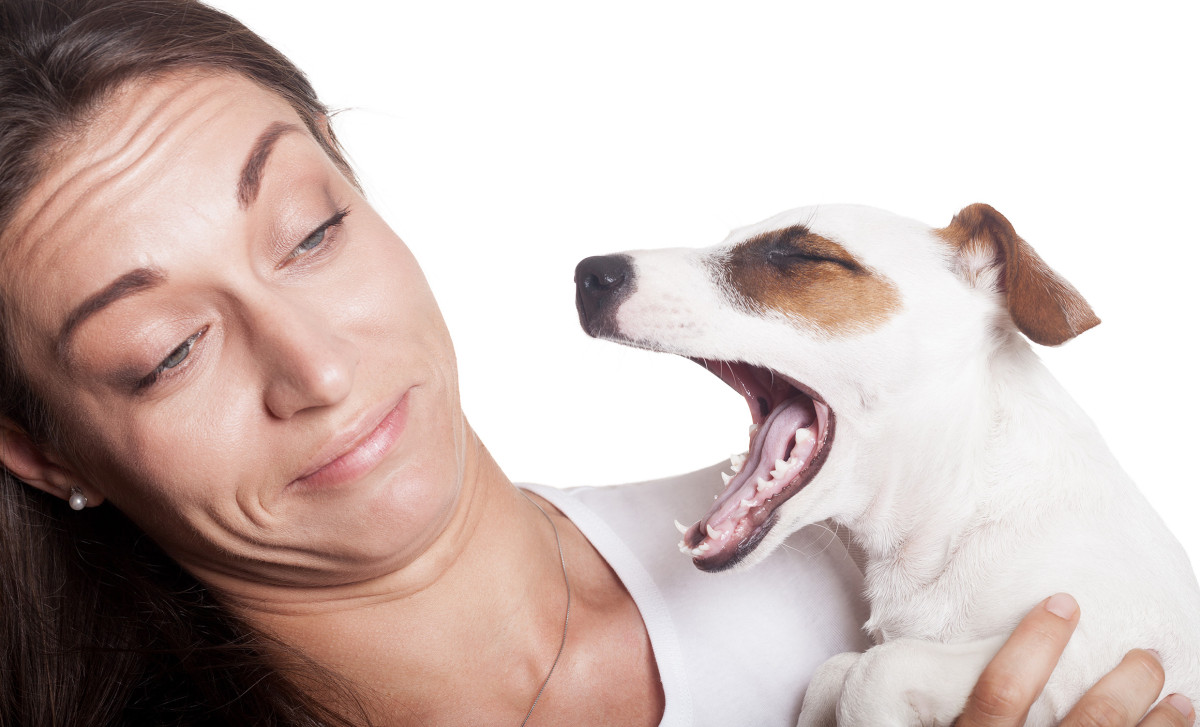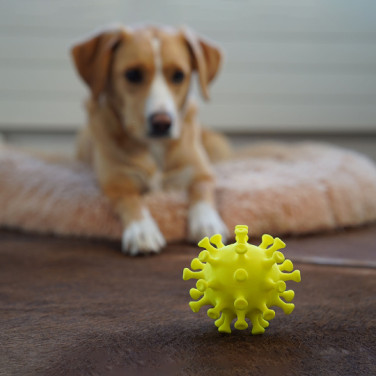SYMPTOMS
Bad Breath in Dogs - Everything You Need to Know
페이지 정보
본문

Overview
Bad breath in dogs, such as sudden bad breath after eating certain snacks or playing with toys is normal. However, if the bad breath persists or worsens, it may indicate something is wrong with your dog’s health. The most common cause of bad breath is oral hygiene and problems with the teeth or gums. Bad breath can also occur if there are kidney or liver problems. To prevent this, you should pay attention to oral hygiene, and if the smell persists for a long time or worsens, you should consult a veterinarian.
What are the causes of bad breath in dogs?
If your dog's bad breath is temporary, there's nothing to worry about, but if it persists, you should suspect a health problem. Ranging from a simple hygiene issue to problems in the kidney or liver, can cause a foul odor.
The list below describes the most common causes of bad breath in dogs.
-
Oral hygiene
The most common cause of halitosis is when a dog’s oral cavities are not kept clean or an oral disease in the teeth or gums. When tartar or plaque builds up on the teeth, bacteria can multiply quickly and cause bad breath. This bacterial growth can lead to gingivitis, inflammation of the gums that cause bad breath.
-
Ingestion of foreign substances
If your dog often goes through the trash can or eats the droppings of other animals. Bad breath can be a result of coprophagia or ingesting foreign substances. Dogs who like to chew on bones and toys can also get foreign material stuck between their teeth or the roof of their mouth, causing bad breath. Bad breath can be a result of coprophagia or ingesting foreign substances.
-
Ingestion of toxic substances
A foul odor can occur if a dog has ingested any poisonous substance or plant.
-
Diabetes
If your dog’s bad breath has a hint of a sweet scent, it may be an odor caused by diabetes. Monitor your dog’s condition for other clinical symptoms such as weakness, increased thirst, and increased urination.
-
Kidney disease
If the foul odor coming from the dog smells like urine, it may be an odor caused by kidney disease. When a kidney is not functioning properly, dogs will begin to build up a toxin called urea in their blood. The toxin can make a dog’s breath smell like ammonia or urine.
-
Liver disease
If symptoms include exercise intolerance, low energy, and yellow gums, bad breath may result from liver disease.
-
Oral tumor
When a tumor develops and grows in an oral cavity, the risk of infection increases and may cause necrosis in the surrounding tissue. As a result, even if the dog’s teeth or gums are normal can cause foul odors.
-
Eating problems
Certain diets, such as raw meat or a homemade diet, can cause changes in the normal flora in a dog’s mouth and gut. Raw meat in a dog’s diet can risk growing salmonella bacteria in the intestine, which can cause bad breath.
What are the symptoms that accompany bad breath in dogs?
It is safe to assume no halitosis when bad breath is only temporary. To distinguish whether your dog has halitosis comes down to lifestyle and how strong the odor is. If you do not own a dog toothbrush or scrub the plaque off a dog’s teeth daily, chances are there is halitosis. Suppose you notice a strong bad breath when the dog is nearby with its mouth simply open or yawning. There is a chance that halitosis is present and should be dealt with to improve your and your dog’s quality of life. There are also different signs of bad breath that can help indicate what might be causing halitosis. If the odor smells slightly sweet, there may be diabetes present, and if the breath smells like urine, there may be kidney disease present.
Below is a list of symptoms that may occur with bad breath and some signs that point to certain conditions that may cause halitosis.
- Vomiting
- Loss of energy
- Frequent urination
- Sweet scent (potential diabetes)
- Ammonia (urine) smell (possible kidney disease)
- Jaundice (possible liver disease)
How to Determine When to see a Vet for Bad Breath in Dogs
Bad breath in dogs can mean many things and does not necessarily signify an immediate concern. If you are not brushing your dog’s teeth daily, it is safe to assume a persistent bad breath requires dental cleaning or a routine change to clean the plaque off their teeth. If the bad breath persists, despite brushing daily, there may be a cause of concern worth consulting with a veterinarian to diagnose through tests.
If good oral hygiene is practiced and bad breath persists, it may be worth investigating possible oral disease. In addition, if there are other clinical symptoms accompanied by bad breath, such as diarrhea, low energy, change in color of the gums, etc. These symptoms are a cause of concern related to other parts of the dog’s body, such as the kidney and liver. The longer bad breath is left untreated; the treatment can get more complicated.
How to treat bad breath for dogs at home
There are no home remedies for bad breath caused by disease, but products are available to help lessen the severity of the foul odor and prevent it from worsening. The only way to resolve halitosis is to treat the underlying disease causing the symptom.

The first and easiest step in treating halitosis at home when no disease is suspected is to keep the dog’s mouth clean from plaque and bacteria. Brushing a dog’s teeth daily and, in severe cases, adding dog mouthwash to their water bowl is recommended. If brushing their teeth is difficult, give them a dental chew product to help keep their mouth clean. Diet is another big part of what you can adjust to reduce bad breath. Certain dry kibble is high in carbohydrates and sugar, which can build up on a dog’s teeth. If your dog has bad breath and is on raw meat or a homemade diet, it may be a good idea to transition to a feed with a balanced nutrient ratio or high in fiber.
How is bad breath in dogs diagnosed at the hospital?
You will be expected to share some information about your dog’s bad breath when visiting a veterinarian for a diagnosis.
You can expect your vet to ask these questions to diagnose bad breath in dogs.
- When did you notice the bad breath start?
- Does your dog have a habit of looking through the trash can?
- Is there any history of eating disorders?
- What kind of food does your dog eat?
- Have you noticed any signs of difficulty eating or show any pain when you touch near or on their mouth?
- How often do you brush your dog’s teeth?
- Has your dog shown any other symptoms, such as loss of energy, appetite, vomiting, diarrhea, etc.?
Based on your answers, a veterinarian will perform several tests to rule out possible causes of halitosis.
-
Dental examination
A general examination to visually inspect for plaque, cavities, and broken teeth. A veterinarian will check for redness on the gums and signs of tumors or abnormalities in the mouth.
-
Blood test
Blood tests help check for diabetes and any diseases related to the kidney or liver.
-
Abdominal X-ray
An abdominal X-ray can help check if bad breath may be due to abnormalities in the liver or intestines.
-
Abdominal ultrasound
An ultrasound can more accurately identify problems within the liver, kidney, and any other digestive organs.
-
Biopsy
If a tumor is suspected, a biopsy is performed to confirm and identify what kind of tumor is present.
Treatment for Bad Breath in Dogs
There are several methods available to treat bad breath in dogs.
-
Dental cleaning
Dental cleaning is the most common treatment for bad breath in dogs. A thorough professional cleaning under anesthesia can help resolve halitosis by clearing all the buildup of plaque and tartar.
-
Extraction
Teeth severely affected by periodontal disease will need to be extracted under anesthesia.
-
Medication
Bad breath due to kidney and liver disease will require a treatment plan according to the underlying cause. Dogs with diabetes will have insulin medication prescribed to manage sugar levels.
How to prevent bad breath in your dog
Once the underlying cause for halitosis is identified and dealt with, prevention is relatively straightforward. The first and most effective step you can take in prevention is ensuring that plaque buildup does not begin or get out of hand. Many products are available for bad breath, from dog food formulated for oral care to dental chews, dog mouthwash, and more. Daily brushing with dog-safe toothpaste is the most effective step to prevent bad breath in dogs. Suppose daily brushing is difficult for your dog; pet-safe mouthwash, dental chews, and gum work in a pinch. Professional dental cleaning at least once a year is recommended if nothing seems to resolve your dog’s bad breath.
Check Bad Breath Symptoms with the Buddydoc Symptom Checker!

If it is difficult to accurately determine the severity of the symptom, you can use the Buddydoc symptom checker to help you! The self-symptom checker service will ask questions about your pet’s symptoms and can take anywhere from 2-5 minutes to receive a pet triage result. Each answer you provide has a triage value and is calculated in the end result page to help you make a better decision for your pet’s health. The result page provides a level of risk to your pet’s health, veterinarian advice, possible diagnoses, and recommended examinations when visiting the hospital.













